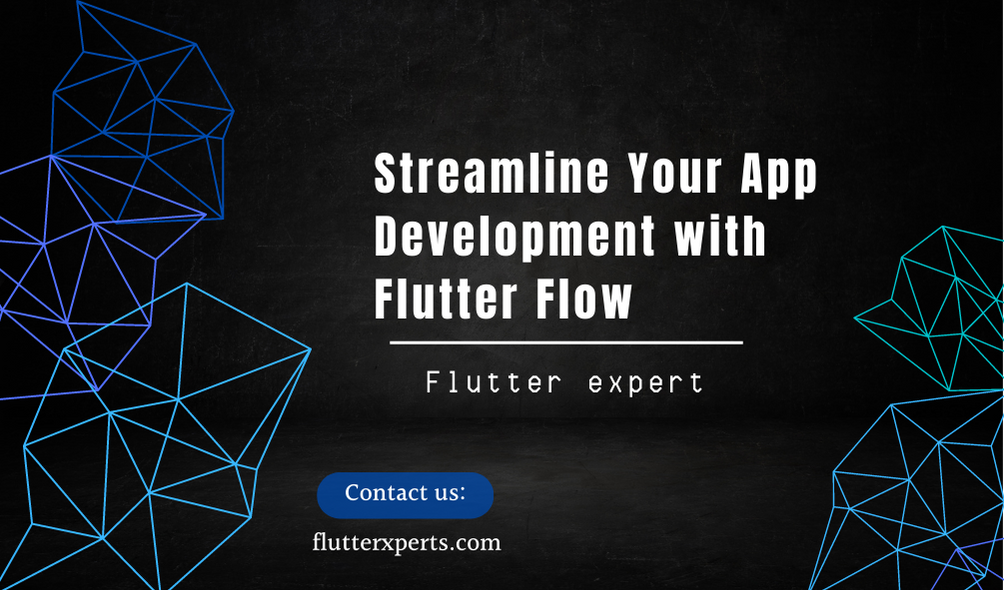Unlocking the Power of Flutter Flow: Simplify and Accelerate Your App Design Process
Introduction to Flutter Flow
Flutter Flow is an innovative visual development tool that simplifies and accelerates the app design process for Flutter applications. With Flutter Flow, developers can create beautiful and functional user interfaces without the need for extensive coding knowledge. This article will guide you through the various aspects of Flutter Flow, from installation and setup to exploring advanced features and best practices for effective development.
Understanding the Basics of Flutter Flow
1 Installation and Setup
To get started with Flutter Flow, you’ll first need to install it on your machine. Follow these steps to set up Flutter Flow:
- Download and install Flutter Flow from the official website.
- Once installed, open the Flutter Flow IDE.
- Sign in or create a new account to access the full features of Flutter Flow.
2 User Interface Design with Flutter Flow
Flutter Flow provides an intuitive interface for designing user interfaces. Here’s how you can create a UI using Flutter Flow:
- Start a new project and select the desired screen size and orientation.
- Drag and drop widgets from the widget library onto the canvas.
- Customize the properties of each widget, such as size, color, and layout.
- Use the canvas to visually arrange the widgets and create a cohesive UI design.
3 Working with Widgets and Components
In Flutter Flow, you can easily work with widgets and components to build complex UIs. Here are some key concepts to understand:
- Widgets: Flutter Flow offers a wide range of pre-built widgets that you can add to your UI. These widgets can be customized to match your design requirements.
- Components: Components in Flutter Flow are reusable UI elements that can be used across multiple screens. By creating components, you can maintain consistency and save time in your app development process.
Exploring Advanced Features of Flutter Flow
1 Animations and Transitions
Flutter Flow enables you to add animations and transitions to your UI elements effortlessly. With just a few clicks, you can create visually appealing effects and enhance the user experience.
2 Data Binding and State Management
Data binding and state management are crucial aspects of app development. Flutter Flow offers seamless integration with state management solutions like Provider or Riverpod, allowing you to manage and update data efficiently.
3 Integrating Backend Services
Flutter Flow simplifies the process of integrating backend services into your app. With built-in API integrations and support for popular frameworks like Firebase or GraphQL, you can seamlessly connect your app to external data sources.
Tips and Best Practices for Effective Flutter Flow Development
1 Optimizing Performance
To ensure optimal performance of your Flutter Flow app, consider the following tips:
- Minimize the use of unnecessary animations and complex UI elements.
- Optimize the size and resolution of images used in your app.
- Regularly profile and debug your app to identify performance bottlenecks.
2 Collaboration and Version Control
Collaboration and version control are essential when working on a team or across different projects. Flutter Flow integrates with popular version control systems like Git, allowing you to collaborate seamlessly and track changes effectively.
3 Troubleshooting and Debugging
When encountering issues or bugs in your Flutter Flow project, follow these steps to troubleshoot and debug:
- Review the error messages and stack traces provided by Flutter Flow.
- Check for any known issues or conflicts with third-party packages.
- Utilize Flutter Flow’s debugging tools to pinpoint and resolve issues in your UI.
Conclusion
Flutter Flow is a game-changer in the world of Flutter app development. It empowers developers to simplify their design process, accelerate development, and create stunning user interfaces. By utilizing the various features and best practices discussed in this article, you can unlock the full potential of Flutter Flow and deliver high-quality apps efficiently.
FAQs
Q: Can I still use code if I’m using Flutter Flow? A: Yes, Flutter Flow allows you to incorporate custom code snippets and logic into your app. It provides a seamless integration between visual design and code, allowing you to combine the best of both worlds.
Q: Is Flutter Flow suitable for both beginners and experienced developers? A: Absolutely! Flutter Flow caters to developers of all skill levels. Beginners can leverage its visual interface to create stunning UIs without extensive coding knowledge, while experienced developers can benefit from its time-saving features and advanced capabilities.
Remember, to achieve the best results, experiment with Flutter Flow and explore its vast potential. Happy app designing and coding!


